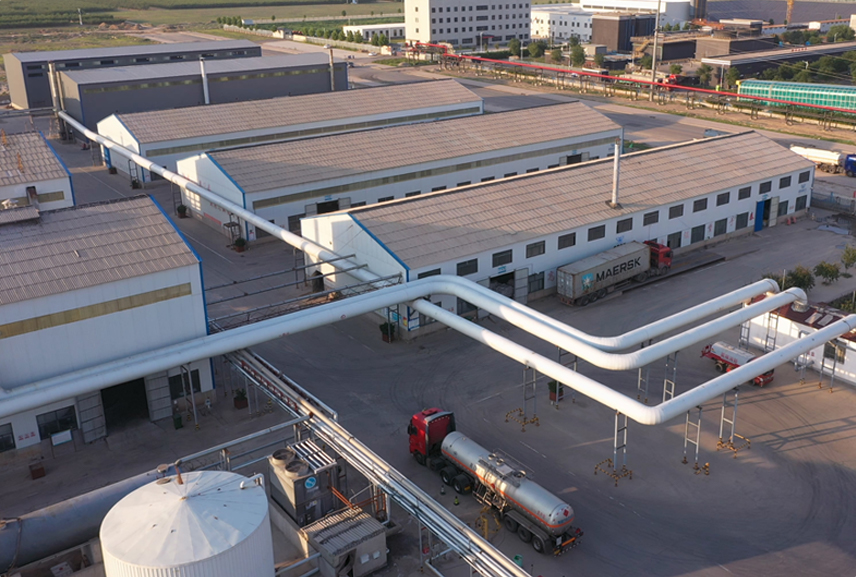Hydroxypropyl methylcellulose (HPMC) CAS9004-65-3 is a non-ionic cellulose prepared from natural polymer materials through a series of chemical processing. It contains methylcellulose (MC) with almost all properties and is your first choice for the production of high-quality building materials additives.
Product Details
Hydroxypropyl Methyl Cellulose HPMC
Hydroxypropyl methylcellulose (HPMC) CAS9004-65-3 is a non-ionic cellulose prepared from natural polymer materials through a series of chemical processing. It contains methylcellulose (MC) with almost all properties and is your first choice for the production of high-quality building materials additives. In order to meet the needs of environmental protection, our HPMC powders have high water retention, dispersibility, good fineness, good workability, and easy-to-use dissolution characteristics.
HPMC hydroxypropyl methyl cellulose is suitable for building dry powder mortar, internal and external wall putty powder (paste), adhesives, caulking agents, joint cover, interface agents, coatings, and self-leveling agents for new building materials additives.
As a professional Joint Filler HPMC supplier, HaoShuo provides different grades of high quality HPMC:
With ISO9001-2000 international quality system certification , factory directly sell and competitive price, our products have been exported around the world like Pakistan, India, South Korea, Bangladesh, Indonesia, Singapore, Taiwan, Belgium, Thailand etc. Sincerely hope to cooperate with you!
Construction grade Hydroxyporpyl Methyl Cellulose(HPMC)
Performance in joint cover
In joint cover, the addition amount of HPMC is very low, only 0.1%-1%, but it plays an irreplaceable role and can significantly improve the water retention, fluidity and lubricity of building materials. Building materials added with HPMC are easier to mix and use, improve the work efficiency of construction workers, extend the open time, improve the bonding strength, and form a smooth and delicate surface coating.
Joint filler application guide
• Increase the bonding strength of wet mortar
• Good water retention can make sure the cement and other additives fully hydrated which can increase the woking time and reduce the risk of cracking.
Packaging and storage
Packaging and storage: 25 kg/bag
Note: The Joint filler HPMC is packaged in polypropylene woven bags, each with a net weight of 25kg. When storing, place in a ventilated and dry place indoors, pay attention to moisture. Pay attention to rain and sun protection during transportation.
Quantity/20GP: 12 tons with pallets, 14 tons without pallets.
Quantity/40HQ: 24 tons with pallets, 28 tons without pallets.
You may also like:
What is Meant by Frost Resistance for Ceramic Tile?
Questions about You Should Know about HPMC
Standard
| COMMON NAME | HYDROXYPROPYL METHYL CELLULOSE |
| ABBREVIATION | HPMC |
| CAS NO. | 9004-65-3 |
| STANDARDS COMPLIANT | ENTERPRISE STANDARD |
| CHEMICAL FORMULA | R=CH2CH(CH3)OH |
Advantages and Features
Joint Filler HPMC PROPERTIES:
* Particle size: 98.5% passes through 100 mesh; 100% passes through 80 mesh.
* Charring temperature: 280-300℃.
* Bulk density: 0.25-0.70 g/cm3 (Usually around 0.5 g/cm3 )
* Real specific gravity: 1.26-1.31.
* Browning temperature: 190-200℃.
* Surface tension: (2% water solution) 42-56dyn.cm.
* Properties: Dissolved in water and some organic solvent such as ethanol. propyl alcohol. ethylene chloride, the water solution is of surface activity. It is a nonionic surface active agent. Gelation temperature is different for different grades. For example, among 60RT Hydroxypropyl Methylcellulose, 60 is gelation temperature, Namely, 2% water solution will form gelation at 60%.
Features of HPMC for joint filler
• Crack-Resistant Strength: Enhance mortar and caulking agents with HPMC for superior anti-cracking strength, ensuring robust and durable constructions.
• Structural Integrity: Optimize mortar air content to reduce the risk of cracks, providing a solid and resilient foundation for your projects.
• Extended Workability: Improve construction efficiency with Haoshuo's HPMC for joint filler, offering extended working time and enhanced water retention for consistent results.
• Adhesive Reliability: Integrate HPMC cellulose ether for improved joint sealant adhesion, high abrasion resistance, and minimal shrinkage, fortifying against water damage.
Packaging and Shipping
Packaging and storage: 25 kg/bag
FAQ
Regarding the relationship between viscosity and temperature in HPMC (HPMC viscosity), what should be noted in practical applications?
What are the differences between HPMC and MC?
What are the formulations for interior and exterior wall putty powder?
What is the application of HPMC in putty powder, and what causes the formation of bubbles in putty powder?
What are the other names for Hydroxypropyl Methyl Cellulose (HPMC)?

Tags
Related Products

Get in Touch
Interested in how our HPMC can enhance your personal care formulations? Contact us to request a free sample and experience the superior quality of our cellulose ether products.
Related News and Blogs
22
May., 2024
25
Apr., 2024
TURKCOAT 2024: Meet Us in Istanbul!
Amidst the bustling atmosphere of TURKCOAT 2024, we, Hebei HaoShuo Chemical Co., Ltd., stand poised to showcase our commitment to excellence in the realm of fine chemical cellulose ether.
25
Mar., 2024
Why You Need HPMC in Dry Mix Mortar?
HPMC (Hydroxypropyl methylcellulose), also known as hypromellose, is a type of non-ionic cellulose ether. It typically appears as a white powder or loose fibrous material, with particles sized to pass through an 80-mesh sieve.
25
Mar., 2024
HaoShuo at 2024 Moscow Coatings Exhibition Interlakokraska
Participation in the 2024 Moscow Coatings Exhibition Interlakokraska was a significant milestone for Hebei HaoShuo Chemical Co., Ltd., as we showcased our cutting-edge products and cemented our position as a leader in the fine chemical cellulose ether industry.

Get in Touch
Interested in how our HPMC can enhance your personal care formulations? Contact us to request a free sample and experience the superior quality of our cellulose ether products.